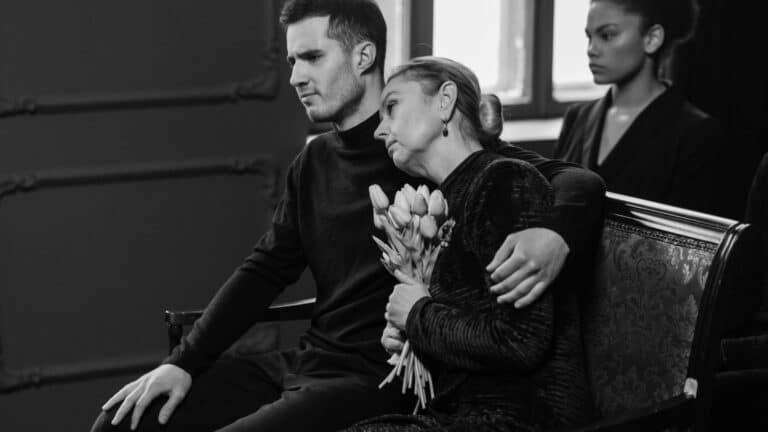Is Sleepwalking a Sign of Trauma?
Is sleepwalking a sign of trauma? Finding the answer to that question is not always as easy as it seems. How do you, as a therapist and psychologist, clinician, physician, or even as a patient know if sleepwalking is a sign of trauma? Sleepwalking is walking at night without being aware of one’s surroundings or other people around them. Sleepwalkers often will walk into cars and even onto roads. It is also known that some animals who are sleepwalking have been known to attack their owners. This can happen when the animal wakes up from a deep sleep only to find itself stuck somewhere in its home – possibly outside its bed or elsewhere in the house.

How are Sleepwalking and Childhood Trauma Related?
There is some evidence to suggest that childhood trauma may be associated with an increased risk of sleepwalking. Trauma, such as physical, sexual, or emotional abuse, can disrupt the normal functioning of the body’s stress response system, which can affect the regulation of sleep. Additionally, traumatic experiences can lead to feelings of anxiety and fear, which can also interfere with sleep. Studies have found that children who have experienced trauma are more likely to have difficulty falling asleep, staying asleep, and experiencing deep, restful sleep. This can increase the risk of sleep disorders, including sleepwalking.
Common Causes of Sleep Walking
The most common cause of sleepwalking is narcolepsy, a neurological disorder characterized by chronic daytime fatigue and cataplexy. Narcolepsy affects about one percent of the population and is diagnosed in approximately two percent of people who experience sleep paralysis. Sleepwalking can also be caused by other disorders, including:
- Bipolar disorder
- Dementia
- Epilepsy
- Marfan syndrome (a connective tissue disorder)
- Sydenham chorea (a movement disorder)
- Sleep deprivation and poor sleep hygiene are other possible causes of sleepwalking.
Sleepwalking is Different from Nightmares and Night Terrors
Nightmares, night terrors, and sleepwalking are all sleep disorders that can occur while you are awake. Nightmares can be distressing and confusing, but they are not real — they are just the brain’s way of reproducing traumatic experiences. In contrast, sleepwalking is different from nightmares and night terrors.
Sleepwalking includes some of the same symptoms as nightmares (such as walking around or having no memory of walking), but it also includes a variety of behaviors that have little connection to the original dream content. These behaviors may consist of talking or yelling out in your sleep; running around the house, or even sexual behavior.
Sleepwalking is often associated with sleep deprivation and other medical conditions such as narcolepsy or obstructive sleep apnea syndrome. This sleep deprivation can lead to many other health concerns including sleepwalking. It has also been linked to depression, anxiety disorders, and some types of dementia.
Stressful Experiences and Sleep Deprivation can Precede Sleepwalking
Stressful experiences and sleep deprivation are known to be significant triggers that can precede sleepwalking episodes. When an individual is under stress, the body releases hormones like cortisol and adrenaline, which can disrupt the normal sleep pattern leading to sleep fragmentation. This can increase the likelihood of sleepwalking. Similarly, sleep deprivation also affects the sleep pattern and can cause the brain to enter a deep sleep stage quicker than normal, making it more likely for a person to experience sleepwalking. Additionally, certain medications and medical conditions can also increase the risk of sleepwalking. Therefore, managing stress levels and ensuring adequate sleep can help reduce the risk of sleepwalking.
Sleepwalking is More Common in Children than Adults, but Why?
Sleepwalking is more common in children than adults, but why? It is more common in children than adults due to several factors. The first is that sleep patterns change as people age, and the deep sleep stage during which sleepwalking occurs is more prevalent in childhood. Additionally, certain medical conditions, such as sleep apnea, that can cause sleepwalking are more common in adults. Additionally, children’s brains are still developing, and this development can affect their sleep patterns. Finally, children are more likely to be put in situations that can trigger sleepwalking, such as being over-tired, stressed, or having a fever.
Your Child’s Sleep Should be Organized to Prevent Sleepwalking Episodes
A consistent sleep schedule, including regular bedtimes and wake-up times, can help regulate your child’s internal body clock and promote healthy sleep patterns. It’s also important to create a relaxing bedtime routine for your child, such as reading a book or listening to calming music, to help them wind down and prepare for sleep. Making sure that your child’s sleep environment is conducive to sleep, such as keeping the room dark, quiet, and at a comfortable temperature can also help prevent sleepwalking. Additionally, avoiding stimulating activities, such as watching TV or playing video games, before bedtime can also help prevent sleepwalking. By creating a structured and consistent sleep schedule and environment, you can greatly reduce the risk of sleepwalking episodes for your child.
No Matter What Causes Sleepwalking, it’s Essential to Address it
So is sleepwalking a sign of childhood trauma, the right answer is it could be but no matter what causes sleepwalking, addressing it is essential for the overall well-being of an individual. Sleepwalking is a disorder that can affect people of all ages and can have a significant impact on their quality of life. The causes of sleepwalking can vary and can include genetic predisposition, sleep disorders, medications, and medical conditions. Additionally, sleepwalking can also be triggered by emotional and psychological factors such as childhood trauma. It’s important to remember that individuals who have a history of childhood trauma may be more prone to sleepwalking and other sleep disorders and they need proper care and attention.
It’s important to consult with a healthcare professional if you or your child is experiencing sleepwalking episodes. They can help determine the underlying cause and develop an appropriate treatment plan. This may include addressing any underlying medical conditions or sleep disorders, making changes to sleep habits and routines, or incorporating therapy to address emotional and psychological triggers. By addressing the cause of sleepwalking, it’s possible to reduce the frequency and severity of episodes and improve overall sleep quality.
Conclusion
In conclusion, sleepwalking is a disorder that can be caused by a variety of factors, including genetic predisposition, sleep disorders, medications, and medical conditions. However, it can also be triggered by emotional and psychological factors such as childhood trauma. Individuals who have a history of childhood trauma may be more prone to sleepwalking and other sleep disorders. It’s important to remember that not all sleepwalking is caused by trauma and it’s important to consult with a healthcare professional to determine the underlying cause of sleepwalking.
By addressing the cause of sleepwalking, it’s possible to reduce the frequency and severity of episodes and improve overall sleep quality. It’s essential to understand that sleepwalking can be a sign of trauma and it’s important to address it and provide proper care and attention to an individual who is experiencing sleepwalking episodes.







